You’re building the perfect workshop, and you think you have everything you need, but then it hits you. Something is missing. The final touch? A circular saw.
Now you need to make a call. Do you go with a table saw or a miter saw? It’s not necessarily an easy choice. In the end, it comes down to the way you’re likely to use it. But what makes these two saws different, and how do you know which is the right one for you? First, spend some time thinking about what type of projects you’re going to do so you know what you need. Then, figure out which of the two will serve you best.
Here’s a complete breakdown of both to get you started. Let’s start with a quick comparison of the pros and cons of each to get started.
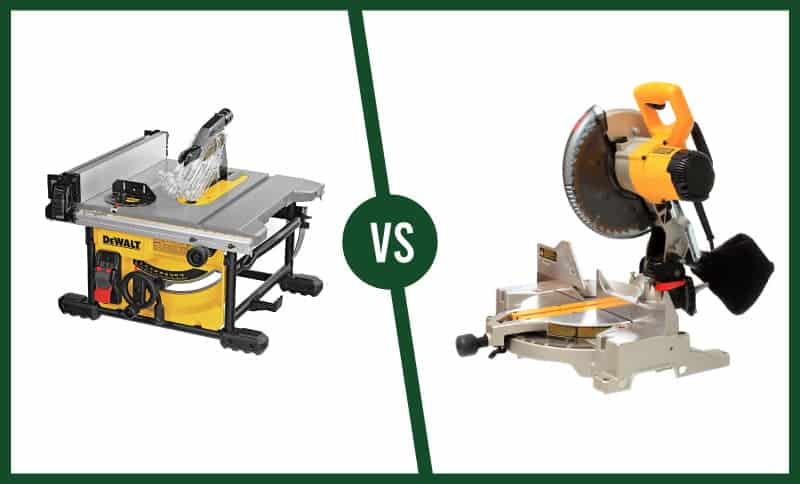
Photo credit: thetoolspick.com
Table Saw vs Miter Saw
Miter Saw | Table Saw |
|---|---|
Pros | Pros |
Cons | Cons |
Best for | Best for |
Carpentry: The miter saw is best for short cuts and precise angles. If you need gentle bevels, this is your saw. | Woodworking: The table saw can handle lengthy cuts and heavy material. If you need a one-size-fits-all, look no further. |
What is a Table Saw?
A table saw is a power tool featuring a circular saw blade cutting along a horizontal line. Generally, table saws feature a built-in table surface. When they do not, they must be placed on another table or surface to cut.
Table saws are commonly used in woodworking, carpentry, and hobby jobs. In decades past, table saws were relegated to expert craftsmen, industrial shops, and professional contractors. Now, table saws are commonly found in workshops, garages, and households for amateur use.
There are many different types of table saws available. As base components, a table saw usually features a circular saw, an arbor, a table, a fence, and an electrical motor. Many saws also feature additional components such as feather boards, miter gauges, and push sticks. You can add alternate blades to cut harder materials. These features are either used for safety, convenience or to perform specialized tasks.
Generally, when looking at a table saw, a consumer will want to check the rip capacity, the adjustability of the fence and gauge, the power of the motor, the potential RPMs, and the depth of the cut. These aspects make the difference between a top tier and lower level saw.
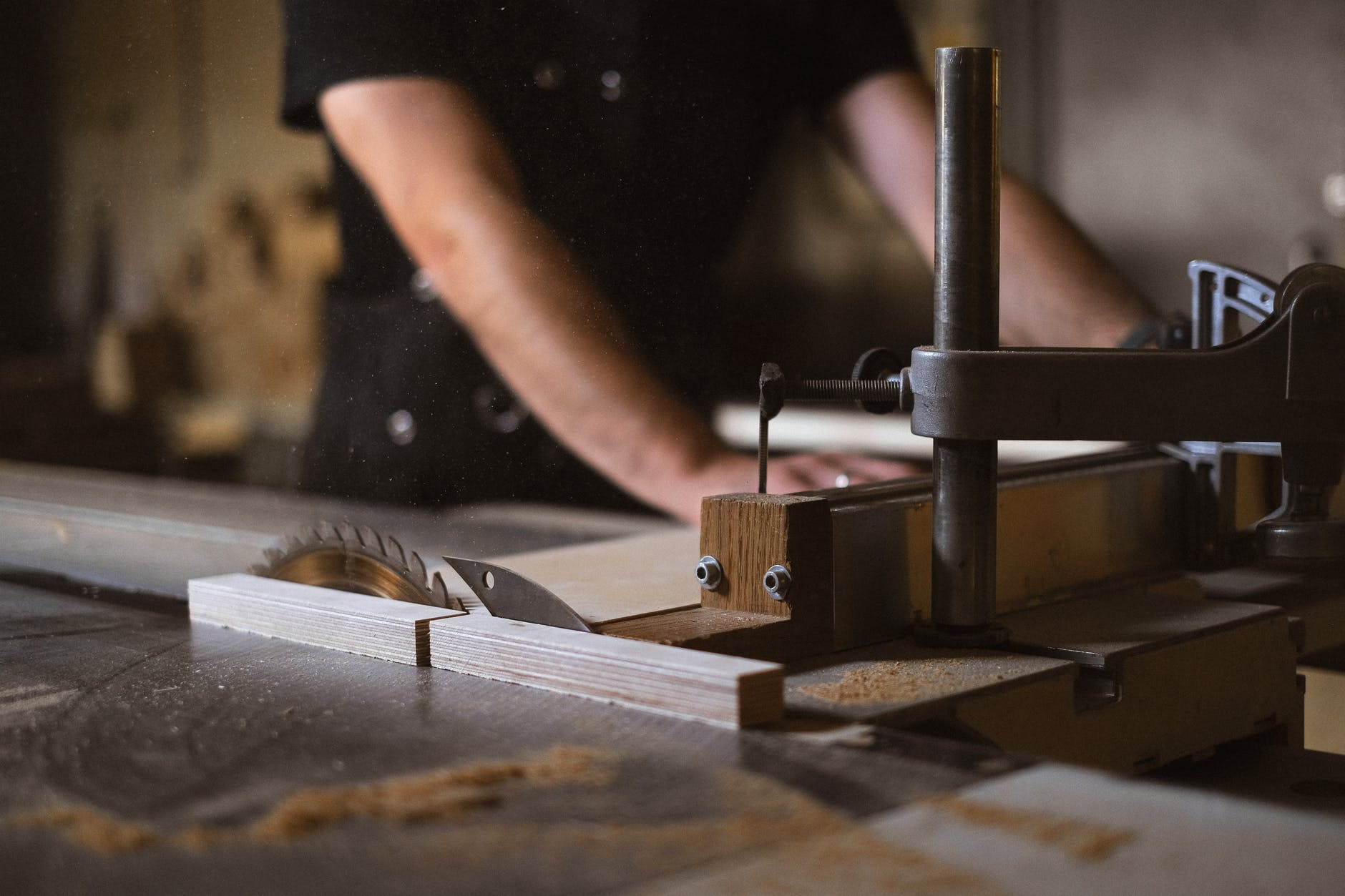
Table Saw Types
Though table saws are a specific type of power saw, the category includes a range of saw types itself. Each type is used for different tasks. The most common table saw varieties include benchtop, contractor saws, cabinet saws, and job site saws. Each of these comes in different variations, such as worm drive or sidewinder mechanisms.
Benchtop
A benchtop table saw is one that does not have a built-in table surface. Instead, you place it on top of a table. These are generally not as powerful as cabinet or job site saws.
Contractor
Contractor saws are attached to a stand or table. These saws are powerful and very large. For decades, they were the most common saws on job sites but have since been replaced by more portable models.
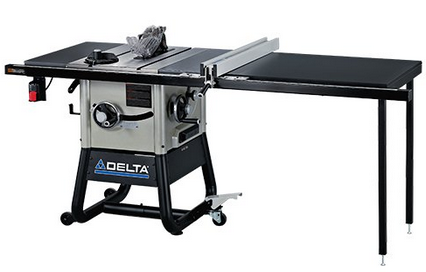
Photo credit: bestcabinettablesaw.com
Cabinet
Cabinet saws are large, heavy-duty saws. They tend to be of very good quality and are used to make big, precise, and difficult cuts. This saw is common in industrial work.
Jobsite
A job site saw is the most common table saw used by carpenters and tradesmen. They are portable and can easily be moved between job sites. They do not typically include a full table but may come with a folding stand.
What is a Miter Saw?
A miter saw is another type of circular power saw. You may have also heard these saws referred to as drop or chop saws. These saws differ from table saws in many ways. For instance, they feature a blade mechanism that declines vertically. This blade positioning contrasts a table saw, which uses a stationary blade that cuts on a horizontal line.
Most people use miter saws to cut angles, miters, and crosscuts. As they descend vertically, they are easier to position for accurate angular cuts than a table saw. Usually, you can angle the blade by hand as you cut, which allows the user a large degree of control over the cut itself.
Miter saws are used for shorter cuts, which allow for more consistent and controlled angles. Unlike table saws, they cannot typically make long cuts.
Most miter saws feature a circular saw blade on a handle that's attached to a vertical shaft. They also feature a fence, a base, and a motor. Different miter saws might also include a sliding rail, a laser guide, a dust bag, and a swivel system.
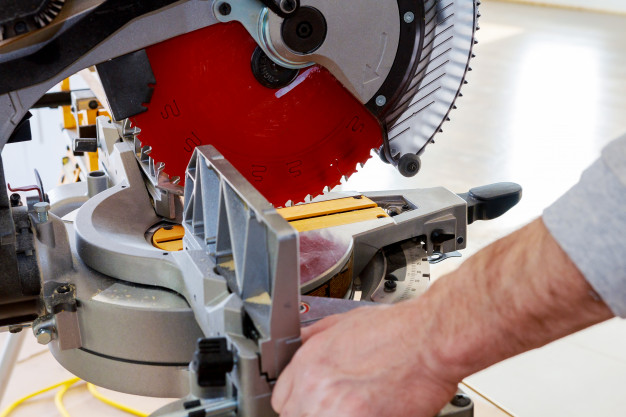
Miter Saw Types
Like table saws, there are many different types of miter saws available. These variations feature accessories that perform specific tasks. Some of these tasks include increasing accuracy or convenience or enhancing the overall design of the product.
The most common types of miter saws are standard miter saws, compound miter saws, sliding compound miter saws, and dual compound miter saws.
Standard Miter Saw
A standard miter saw is the most basic type. It features a horizontally descending circular blade and is best for crosscuts at preset angles.
Compound Miter Saw
Compound miter saws are very common. These are miter saws that allow the blade to be angled, allowing for bevel cuts. Many people expect their miter saws to have compound features.
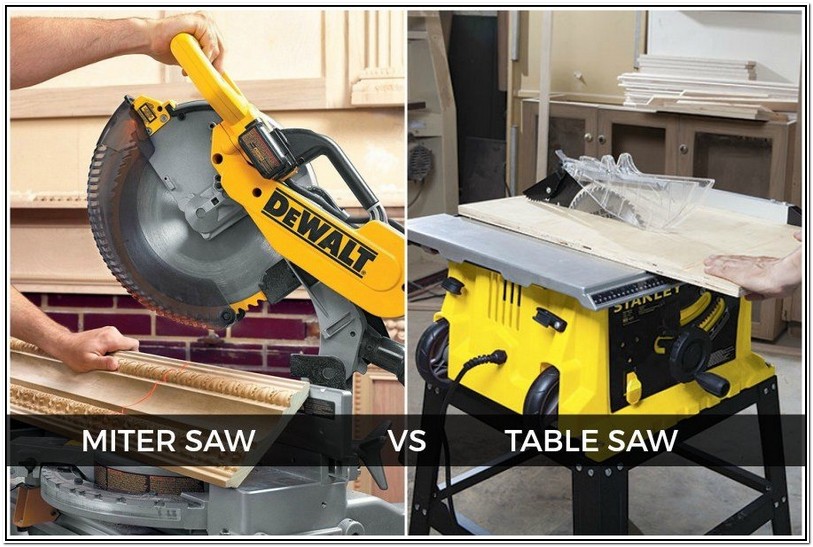
Photo credit: payattention.com
Sliding Compound Miter Saw
A sliding compound miter saw is a miter saw that features a sliding rail, allowing the saw to move horizontally. These extend the potential size and length of materials being cut.
Dual Compound Miter Saw
A dual compound miter saw is simply a miter saw that can be angled on both sides, allowing for even further versatility in the cut. This is very useful for specialized craftsmanship and carpentry.
Relevant Characteristics Between Table and Miter Saws
Miter Saw | Table Saw | ||
|---|---|---|---|
Max 6”-8” | Cut Length | Max 4’x8’ | |
900W - 2,400W | Wattage | 600W - 2,400W | |
3,450+ | RPM | 3,450+ | |
5.5-7.5” on 10-12” Blade | Cut Depth | 3-4” depth on 10-12” Blade | |
Typically 15 | Amperage | Typically 15 | |
Similarities and Differences
Now that the basic stats are out of the way, we can get into some of the more extensive analysis.
In many ways, these two circular saws are closely related. However, there are many differences between a table saw and a miter saw. Here’s a look at the key differences:
What’s the Difference Between a Table Saw and a Miter Saw?
The biggest difference between a miter saw and a table saw is that a miter saw uses a circular saw blade that descends vertically when cutting. In contrast, a table saw features a stationary circular saw blade that cuts horizontally as a board passes across it. Both saws feature spinning blades.
In terms of variables such as RPM, motor power, cut depth, and cut length, both table and miter saws vary significantly within their categories. For instance, some table saws can feature 600W motors while others feature 2,000W motors. Some table saws will get about 3,500 RPM on the blade spin, others can reach tens of thousands of RPMs.
Generally, the motor power, amperage, and rotations per minute indicate the saw's strength and capability.
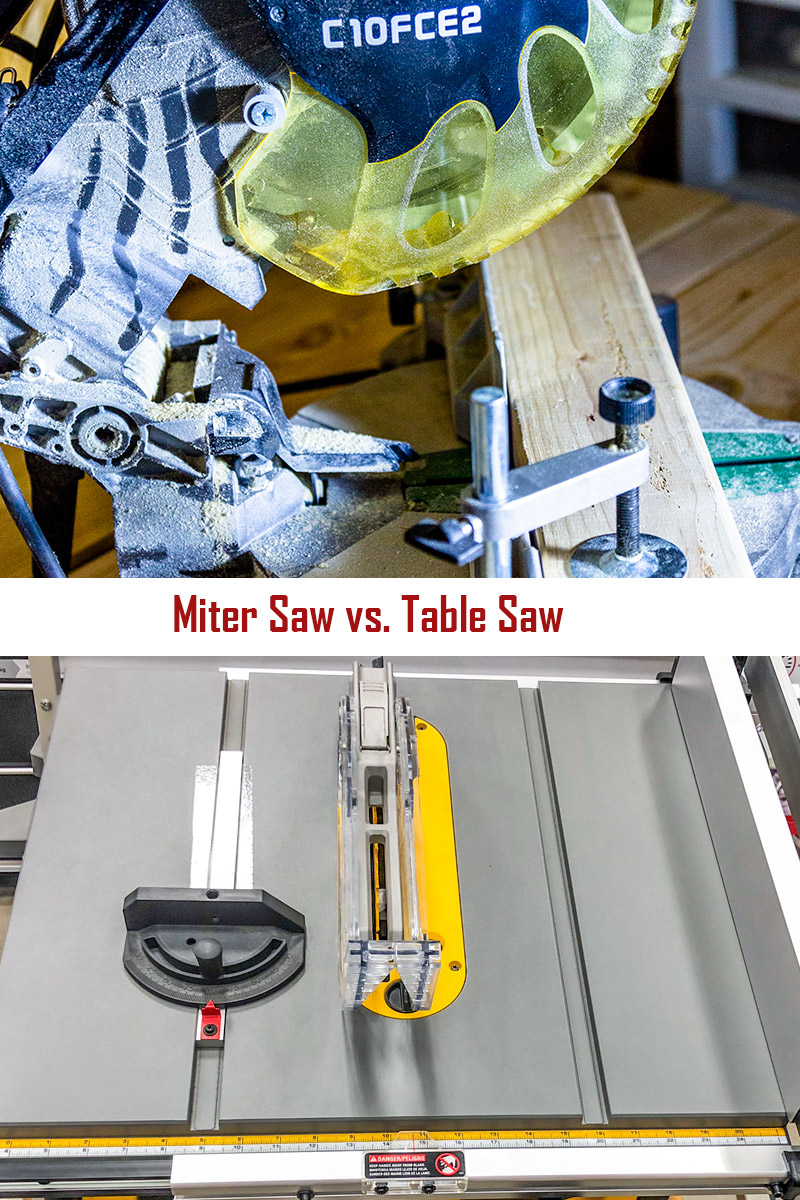
Photo credit: simplyhometips.com
However, these factors alone do not characterize a high-quality saw. For instance, a table saw with a worm drive will likely have lower RPMs due to the nature of the gear mechanism installed in the saw, which does not mean that a worm drive saw is not capable. Worm drive saws typically feature higher torque than standard saws giving them a different kind of power.
The biggest differences between table saws and miter saws come into play when discussing their functionality. Typically, a miter saw can cut much deeper than a table saw because the blade descends manually. In contrast, a table saw can cut much longer than a miter saw because the blade is stationary, meaning the operator and table size determine the cut length.
A miter saw can be angled manually by the operator, allowing for a precise and accurate cut. This also allows for a wide range of cutting types. To alter the angle of a table saw blade, it is necessary to get under the table itself and change the blade position on the anchor.
How Are a Table Saw and a Miter Saw Alike?
Table saws and miter saws share a large number of similarities. First of all, both of these tools are electrically powered saws. They also both feature circular blades that cut by spinning that is activated by a motor. The motor either spins the blade directly or does so through the use of belts or gears.
Through a quick survey of their various stats and variables, it becomes clear that miter saws and table saws often have similar levels of power, cutting capabilities, and performance levels. They tend to run on similar motors, achieve similar RPMs, and require similar energy levels because many of the mechanisms are shared.
Miter saws and table saws can perform a lot of the same cuts. For instance, by attaching a miter gauge to a table saw, it is possible to cut at an array of different angles and many lines. It is also possible, in some cases, to attach a radial arm to a composite miter saw to allow for horizontal cutting; however, these cuts will still be smaller and less controlled than those you can get from a table saw.
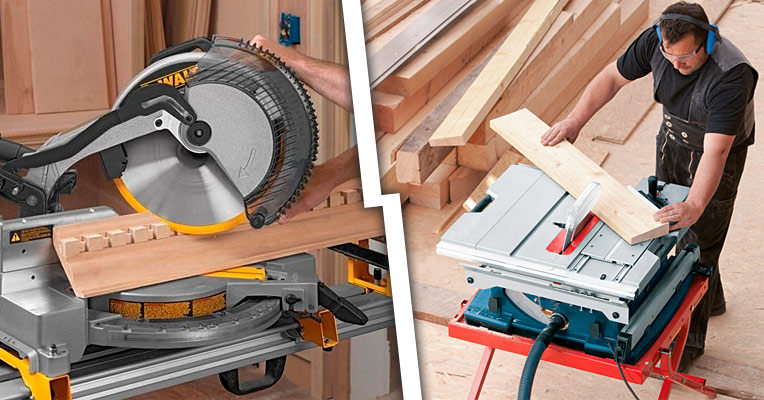
Photo credit: bestadvisor.com
Contractors, carpenters, hobbyists, and woodworkers use both table and miter saws. Many people say that a table saw is used hundreds of times more often than a miter saw, but using a miter saw will save hundreds of hours. Both saws have various blade sizes. On a miter saw, the blade width determines the length of the cut. On a table saw, the width and height of the blade determine the cut.
Both miter and table saws can come in compact and portable options. They also both come in large, industrial sizes, which allows the two saws to be used in a wide range of settings for a large number of different jobs.
Advantages of a Table Saw
A high-quality table is one of the most useful pieces of machinery that you can buy. There is a reason that everyone from professional contractors to amateur hobbyists has a table saw in their arsenal. If you plan to do any major home improvement or construction projects, you will run into the need for a table saw sooner or later. A table saw is essential for many tasks, like ripping planks, cutting sheets, or making large scale straight cuts.
A table saw is a versatile piece of equipment. The specific features and variables you will require in your saw will depend on the particular ways you use it. For instance, if you are using your table saw for hobby needs, you may need a saw that can make small, precise cuts, which is not something that all table saws can do. As a result, investing in a quality saw is worth it.
No matter how you plan to use your saw, all good table saws should have good rip capacity, strong motor power, a certain degree of adjustability in the angle and height, and a reliable table surface or stand. If your saw does not come with a table or stand, a good quality saw will include stabilizing feet.
The advantages of a quality table saw include power, portability, storage, adjustability, and durability. When you opt for a table saw instead of a miter or handheld saw, it is likely because you anticipate making larger cuts. A quality table saw generally features an adjustable fence that holds your material in place as you push it through the saw blade, which allows the cut to remain clean and straight regardless of the length. In contrast, a hand saw requires incredible consistency to ensure straightness over distance. A miter saw simply cannot make cuts like this.

Advantages of a Miter Saw
Miter saws are useful in their own right. There is no better tool out there for making shortcuts, angles, crosscuts, or bevels. The miter saw allows the user to make cuts cleanly and sharply with accuracy. As the handle allows for mid-cut adjustments, you can precisely control the contour.
A miter saw allows a beginner woodworker to make professional quality work. By this, we mean that an inexperienced carpenter can make very detailed and intricate cuts on a miter saw that they would otherwise be unable to. The downward motion allows for excellent visibility and control, and the structure of the saw itself helps to direct and guide the cut.
Miter saws are more precise, on average, than a table saw. With a table saw, the blade is stationary, and you have to move the material to continue the cut. In contrast, a miter saw blade moves. The material on a miter saw is stationary. This combination means less variation in angle, pressure, and speed when cutting on a miter saw.
A miter saw also tends to be more controlled and more controllable than a table saw. This control not only refers to the ease of cutting but also the potential kickback. A table saw can catch the wood in its blade. When this happens, the blade either sends the wood backward at the operator or pulls the operator towards the blade. Both of these scenarios are dangerous and can result in serious injury. Of course, with care and safety precautions, you can avoid the risk of such an occurrence. However, miter saws do not typically have the same level of risk. The blade is constantly in the hands of the operator, which lowers the risk of kickback.
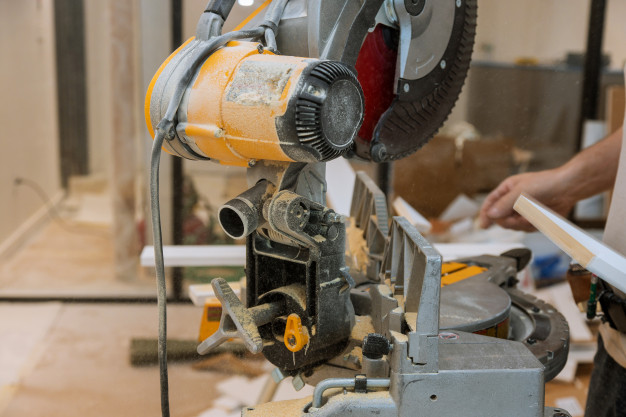
What About a Circular Saw?
While the term circular saw is often used when referring to the circular saw blade, a circular saw is a specific power saw category. Both miter saws and table saws are types of circular saws. You can determine this by considering the blade type, cutting mechanism, and spinning nature of the blade.
Circular saws are commonly used to cut wood, but you can also use them to cut a range of other materials. To do so, it is necessary to attach the correct saw blade. Some of the other materials that a circular saw can cut include metal, plastic, acrylic, masonry, and tile. No matter the type of material, circular saws are likely to be used to make rip cuts or crosscuts.
The most common forms of circular saws for woodworking are table saws, miter saws, and handheld saws. Other circular saws include brush cutters, radial arm saws, abrasive saws, panel saws, track saws, pendulum saws, biscuit joiners, and sawmill saws.
We discussed the specifics of table saws and miter saws above. However, when somebody uses the term circular saw without an adjective, they are likely referring to a handheld circular saw. Handheld saws are very common and are a great alternative to the table and miter saws for certain jobs. A handheld saw is likely to be used more frequently in day-to-day woodworking than either of the above-mentioned saws.

A handheld circular saw is essentially a powered alternative to a handsaw. These saws are cheaper, more portable, and more versatile than either table saws or miter saws. They are really useful for smaller jobs. For example, you can use a handsaw to trim boards and planks, cut lengths of wood, and cutting slots and rebates. However, they cannot perform the same functions as efficiently or effectively as quality miter and table saws.
When and Why Would I Use a Table Saw?
There are many times a table saw is necessary. Usually, people use table saws to cut wood, which can be anything from planks and lumber to sheets of plywood. However, with specialized blades, you can use a table saw to cut a wide range of materials, including aluminum, plastic, acrylic, and tile.
People use table saws on construction sites, in household projects, and everywhere in between. If you are planning to cut lumber for a deck, for instance, you will likely need to use a table saw. These saws are great for making long, accurate cuts with little effort.
Here are some of the things that table saws do best:
Large Cuts
Whether you’re ripping a long piece of plywood or cutting through a thick piece of lumber, a table saw is the best tool for large cuts.
Straight Lines
A miter saw is great for making clean, short cuts and neat angles. However, a table saw allows you to make much straighter cuts lengthwise.
Versatility
In the hands of a talented craftsman, a table saw can make any cut that a miter saw can make. It just might not do it as well or as easily.
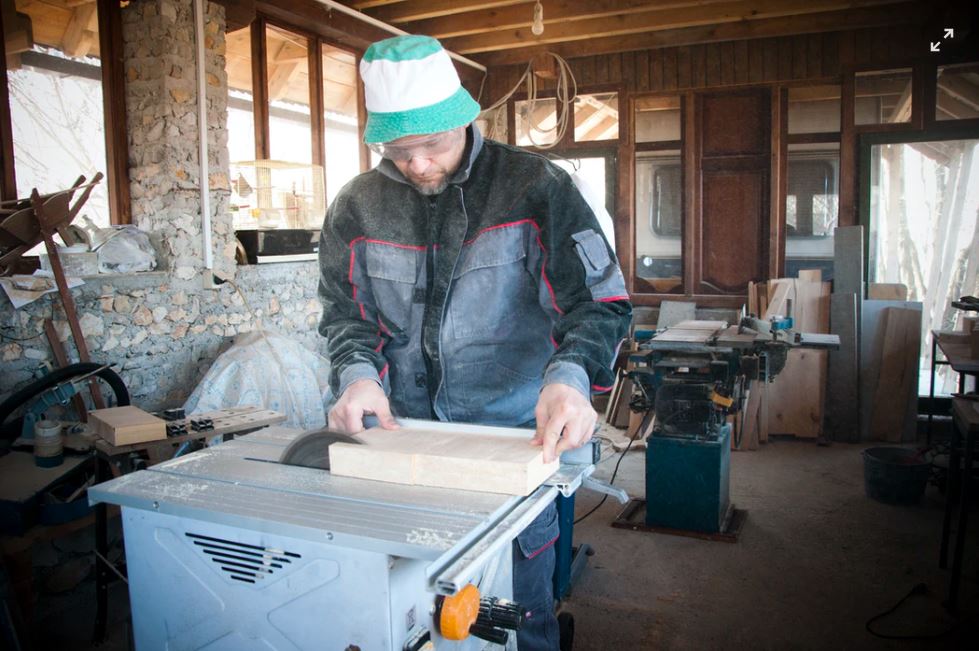
When and Why Would I Use a Miter Saw?
If you want to produce professional quality work, it is important to use the right equipment for the job at hand. Miter saws and table saws are both essential pieces of equipment. However, every job requires a specific tool. Sometimes the uses for a table and miter saw overlap. Sometimes, a table saw just won’t do.
Here’s a look at some of the things that a miter saw can do best.
Angles
Most people understand that a miter saw is better than a table saw when cutting angles. Why? Because a miter cuts at a downward angle and you can position it more precisely and cleanly.
Bevels
It is far easier to adjust the angle of a miter saw to cut bevels than it is to adjust the blade on a table saw.
Trims
Miter saws are better for short cuts than table saws. For this reason, they can handle trims much more easily.
In short, a miter saw is better for shorter and more precise cuts. A table saw might be a better choice for a woodworker, while a miter saw might be better for a carpenter. Miter saws are great when cutting window trim, crown molding, frames, etc.
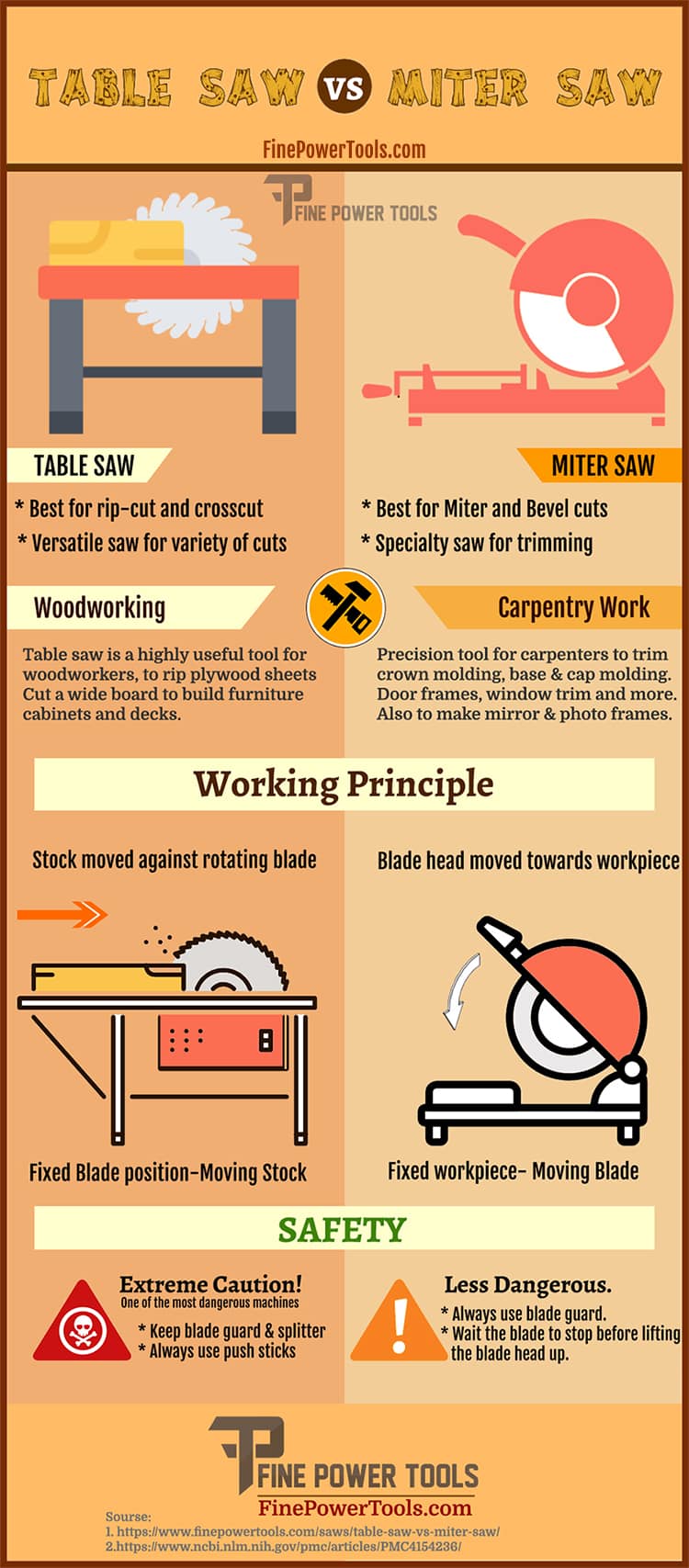
Photo credit: finepowertools.com
Bottom Line
Both table saws and miter saws are important pieces of equipment. As you’ve probably noticed, the comparison above does not celebrate one type of saw while condemning the other. Instead, it highlights the specific benefits of each. For different jobs, a different saw is ideal.
Miter saws tend to be better for short cuts, angles, bevels, and miters. This means that they are likely better suited for use in detailed carpentry work. For instance, if you plan to assemble your door or window frame, you may need to use a miter saw.
Table saws are very versatile. They can handle long cuts. With fences and miter gauges, they can cut straight angles very well. For this reason, they are necessary when cutting sheets or planks.
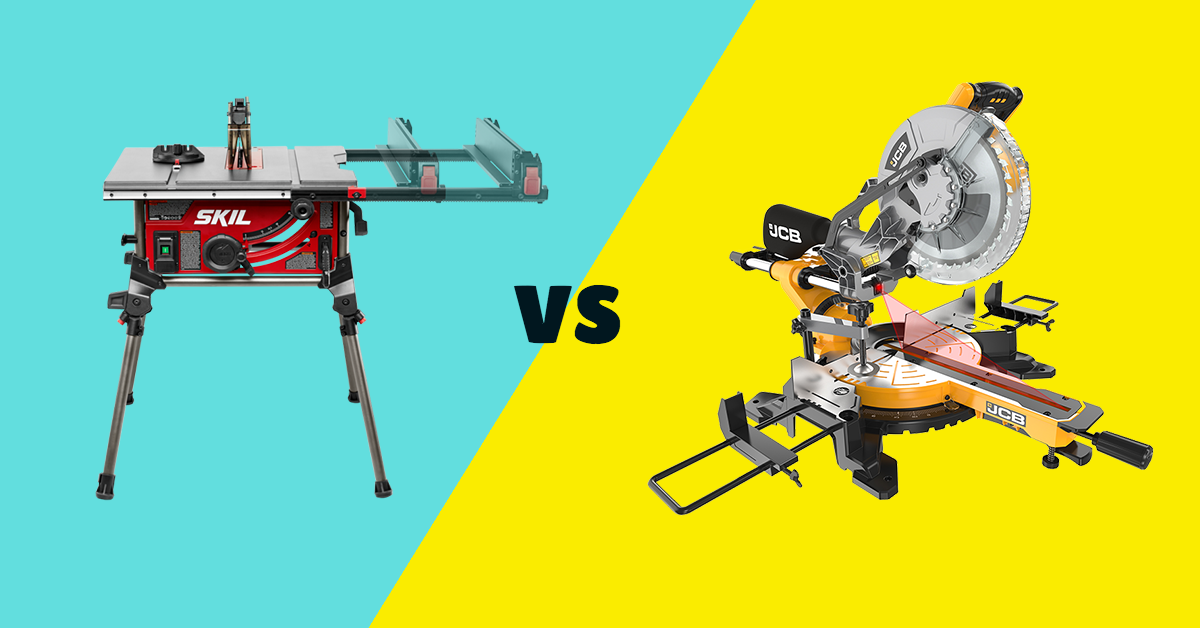
Photo credit: band-saw.com
People Also Ask
Well, that’s it. Now you know everything there is to know about the table and miter saws... almost.
Before you go, take a moment to read through some of our answers to commonly asked questions regarding the differences between miter saws and table saws. This FAQ should clear up any questions we’ve left unanswered.
Will a Miter Saw Stand Work for a Table Saw?
A miter saw stand should not be used for a table saw. A miter saw descends vertically, whereas a table saw cuts vertically. As a result, the design of the miter saw and table saw stands differ. Using the wrong stand can lead to accidents and serious injuries.
Can a Table Saw Cut Angles?
Yes. A table saw can cut angles. The table saw can be fitted with a miter gauge to cut angles. It can also feature adjustable fences. Also, you can often adjust the saw blade from beneath the table. However, it is much easier to cut accurate angles on a miter saw.
Can Table Saw Blades Be Used on a Miter Saw?
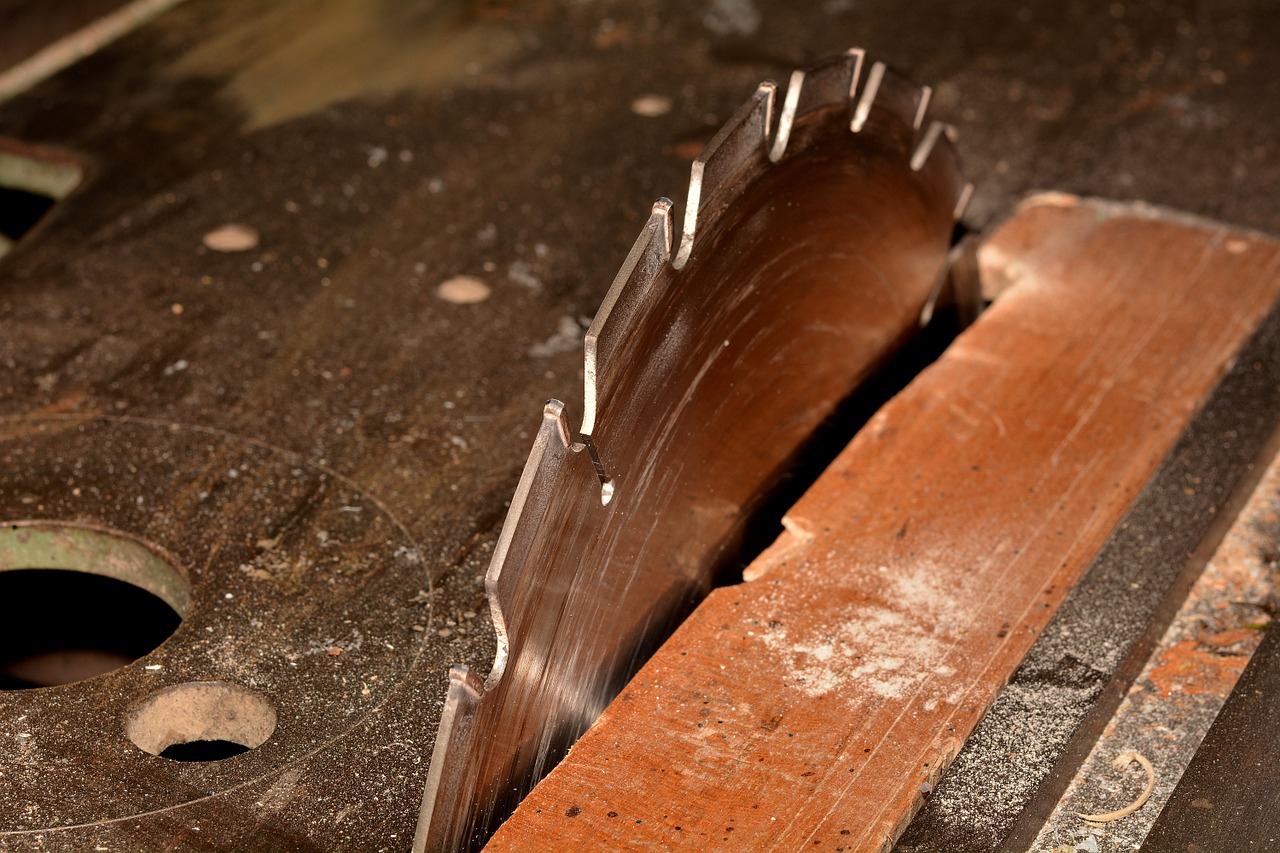
It is sometimes possible to use a table saw blade on a miter saw. As both saws use spinning circular blades, there is a degree of overlap between them. However, it is important to check whether you can use the blade you have on the specific saw in question.
Is a Table Saw or Miter Saw Better for Beginners?
It depends on the job you are using your saw for. A beginner woodworker attempting to cut angles or bevels will likely find a miter saw much easier to use. Why? Because the cut is much faster. However, a miter saw cannot cut a larger piece of wood. Therefore, a table saw is easier for big jobs.
